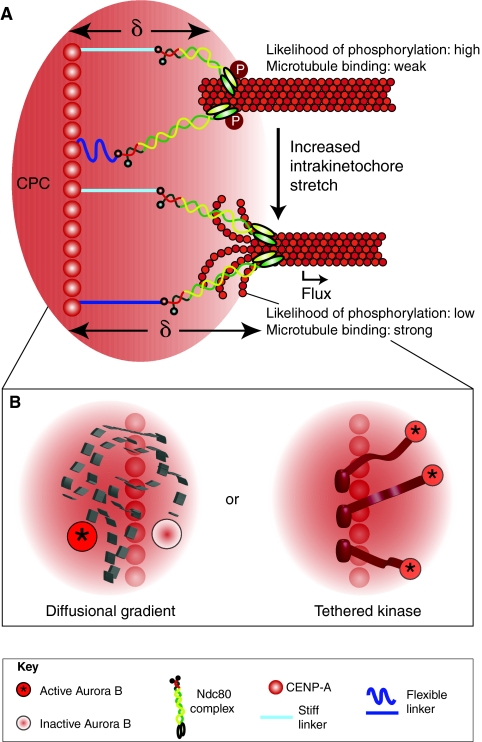Fig. 4.
Intrakinetochore stretch can provide the spatial resolution necessary to efficiently regulate kinetochore phosphorylation and attachment stability. (A) The CPC, which is localized in the inner centromere (underlying CENP-A), generates a functional range of Aurora-B-kinase-mediated phosphorylation (red gradient). Increasing delta (δ) and introduction of intrakinetochore stretch positions the outer kinetochore outside of the working distance of Aurora B and therefore promotes stronger binding to the microtubule because of reduced phosphorylation. Unlike the centromere-stretch model outlined in Fig. 3A, the intrakinetochore-stretch model allows for movement of microtubule attachment factors such as Ndc80 relative to the source of phosphorylation. (B) How is the working distance of Aurora B defined? One possibility is that it acts through a diffusional gradient whereby Aurora B becomes activated (asterisk) at a point-source (centromeric chromatin) and then diffuses away before it deactivates (no asterisk). Alternatively, active Aurora B kinase (asterisk) might be tethered to the centromeric chromatin, with its working distance within the kinetochore space defined by the length of this physical linkage (Santaguida and Musacchio, 2009).

